Fashion Blogging
How to Start a Fashion Blog – Complete Guide
Ever wondered why there are so many Instagram-style images everywhere?
You know the ones. Selfies taken in front of mirrors, dried flowers artfully arranged on a sideboard, or a close up of a pastel manicure?
Well, this aesthetic can easily be attributed to fashion blogging.
In this guide you'll learn:
- What exactly fashion blogging is and how to get started
- How to become an Instagram influencer
- How to earn money as an Instagram influencer
- The past, present, and future of fashion blogging
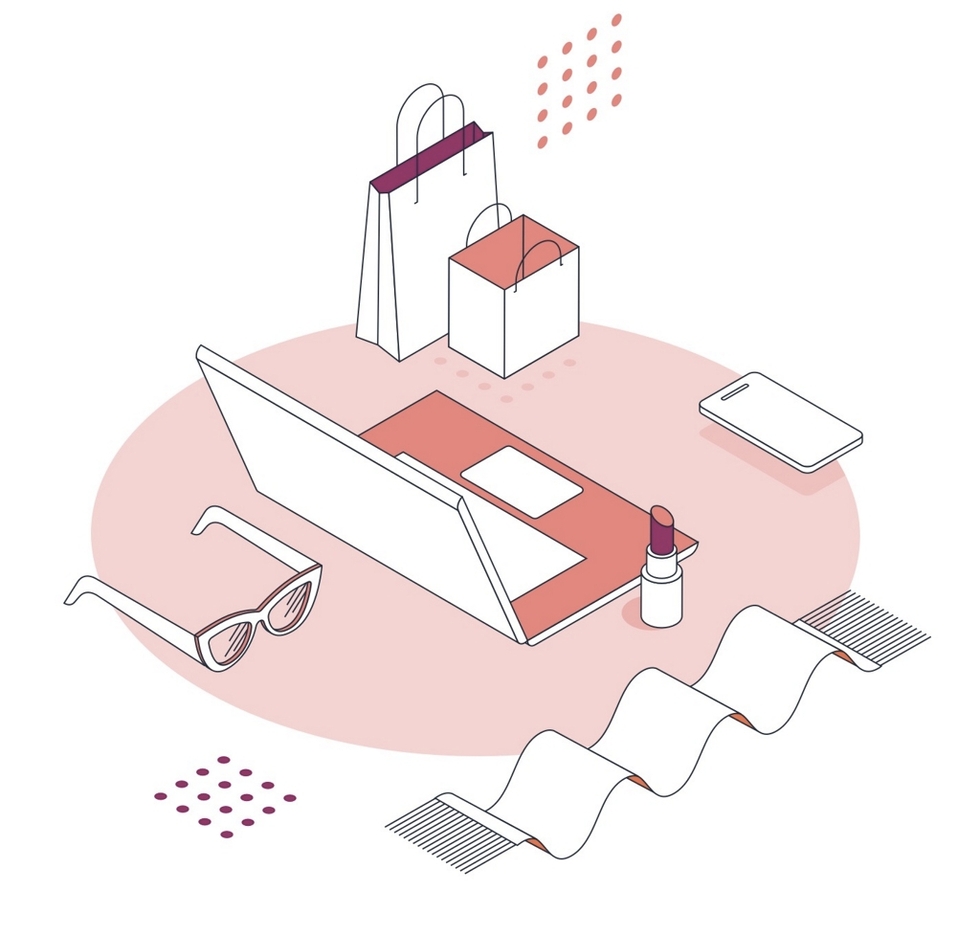
If you’ve ever wondered how to become an Instagram influencer, it may be wise to start off with the transferable skills that most of the original bloggers are still using today.
The content can be a blend of original photos, text, and collages. Readers are able to comment on posts and a community can be built.
Compared to a glossy magazine like Vogue, fashion blogs are informal, experimental spaces that allow diverse groups of people to take part.
Fancy sharing your thoughts on sustainable fashion for plus size women? It’s possible.
Perhaps you’d prefer posting street style from Helsinki? Go right ahead.

You don’t have to know the right person or report to a higher power, but can simply start posting from your bedroom and build an audience.
How to start a fashion blog
So how do you start a new blog in 2020?
The first task is to get brainstorming.
Grab a notebook, and start jotting down ideas. What topics or trends are you passionate about? What do you want to represent?
It may also be useful to have a secret Pinterest board to organise visual inspiration. Look out for any colours, fonts, or moods that stand out.
These are some questions to ask yourself:
- Describe your potential blog in three words.
- Who is your ideal reader? Where do they live, what are they interested in, and how old are they?
- What could your blog provide to your target audience? Is there anything similar out there already?
- Do you have an area of expertise or personal experiences? What’s something different that you could offer?
- Are there any fashion bloggers or influencers you admire? What are the common aspects you’d like to share?
- Are there any aspects you wouldn’t want for your blog?
How to name your fashion blog
Decide whether you’d prefer to include your real name, a phrase, or something more abstract. One advantage of the former is that it’s great for personal branding and allows you to diversify into other content niches further down the line.
If you don’t use your name, then it may be easier to create separation and bring on contributors further down the line.
Blog names we love





Have a play with fashion blog name ideas, and write down as many variations as possible.
Is it an easy name to note down if it’s mentioned on a podcast? Will anything unrelated to your blog come up? Check whether there are any similar blogs or businesses via Google search.
It’s also important to see whether all the associated social media handles are available. You don’t want people to be confused as to how to find you or have to explain that there’s an extra special character or symbol ( e.g., ‘_’) on a certain platform. Aim for consistency, and tweak if necessary.
Creating a mission statement
Once you’ve finished your initial brainstorm, you can start crafting your mission statement.
This may look like:
(BLOG NAME) is a UK-based Fashion Blog by (YOUR NAME), focusing on shopping second hand and building a sustainable wardrobe.
It is for (INSERT GENDERS) who are (INSERT AGE RANGE) and are looking for styling inspiration, advice on where to shop, and tips on how to alter garments.
(BLOG NAME) aims to provide relatable and affordable fashion content, via regular blog, and Instagram posts.
This will allow you to stay focused on your goals and make sure that you have a consistent message within your content. For example, if a sewing machine brand gets in touch for a campaign, you will quickly see that it aligns with your mission, and know that your audience will find it useful.
How to choose a blog design
Branding is so important. A strong logo and visual identity can conjure up specific emotions and position you where you want to be.
A blog needs to have a recognisable logo and UX design that’s simple to navigate across multiple devices.
You will need to approach this as a project, gathering images for inspiration, colour palettes, and examples of web design that you like. Don’t just stick to the expected places, but look at magazines, books, and film for typography ideas.
It may be easier to work with a separate designer for the brand identity and web developer in order to get exactly what you want.
Set a budget for the project. Prioritise whether to invest in branding or work with an existing template.
Remember you can always redesign your site once new developments and functionality come along.
Where should you host your fashion blog?
The most widely-known platforms are:
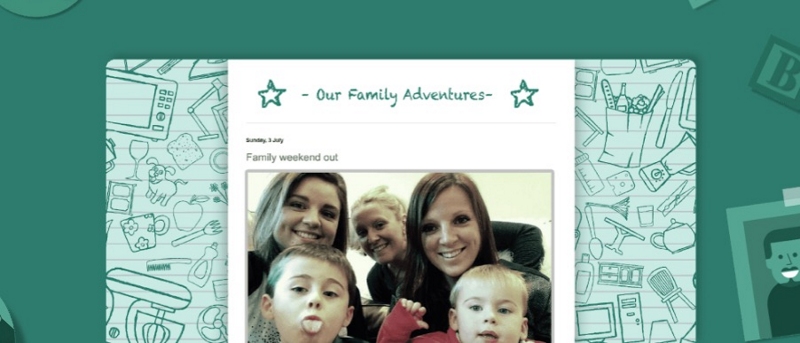
Although Blogger is one of the oldest and widely known services, it has many limitations. Hosting is free, and you can find inexpensive templates on Etsy if you’re just starting out.
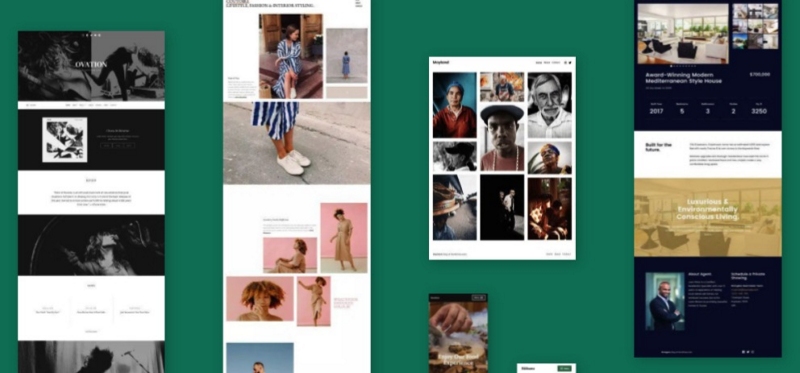
WordPress offers a free option or a self-hosted version. Most sites on the Internet are run on the self-hosted WordPress.org, so it can be trusted and used for years to come.
It offers unlimited possibilities but can be complicated if you’re not a coding wizard. However, you can add useful plugins for managing SEO and installing heatmaps.

Squarespace allows you to work with professional template designs if you don’t have huge funds to invest. The monthly subscription includes a custom domain name, hosting service, and email address.
It’s also easy to add e-commerce store functionality further along the line. This may be useful if you ever want to start offering digital products or online services.
Building a blog content calendar
Once you have your branding and website, it’s time to start working on content.
By creating a detailed content calendar, you can plan ahead and make sure that everything is posted at the optimum time.
Decide how often you’d like to post. Whether it’s every day or once a fortnight, it’s best to stay committed and have a regular schedule. You don’t want to panic the night before a post needs to go live.
Whether you start in January or any time of year, map out key dates such as Valentine’s Day, Easter, or any trips you may have planned so you do your best to have consistent posting.
If you’re looking for further inspiration, Pinterest produces detailed trend reports every year. This is useful for spotting cultural shifts and changes in consumer behaviour.
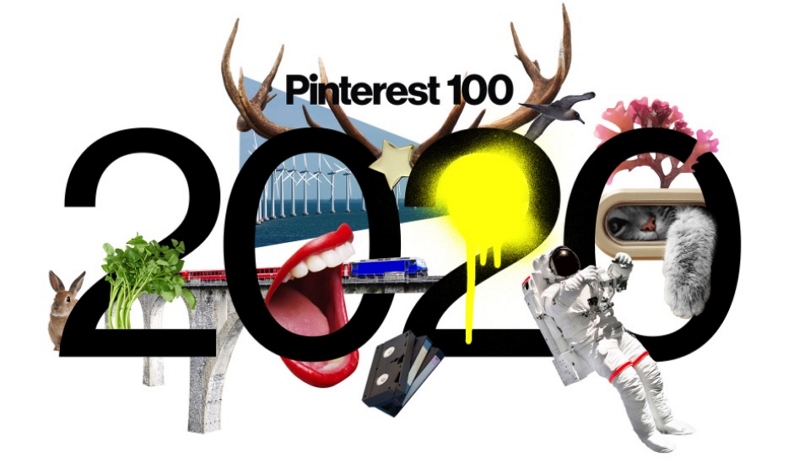
Perhaps you want to cover conscious consumption? Look at what readers may be focusing on throughout the year and relate this to events and experiences like festival fashion, working from home, and dressing for Christmas parties.
One you have an idea, work backwards, and plot in time for planning the post structure, shooting images, writing, and scheduling social media posts.
Now that you know the basics, let’s move to Instagram and dive into the process of becoming a Fashion Influencer.
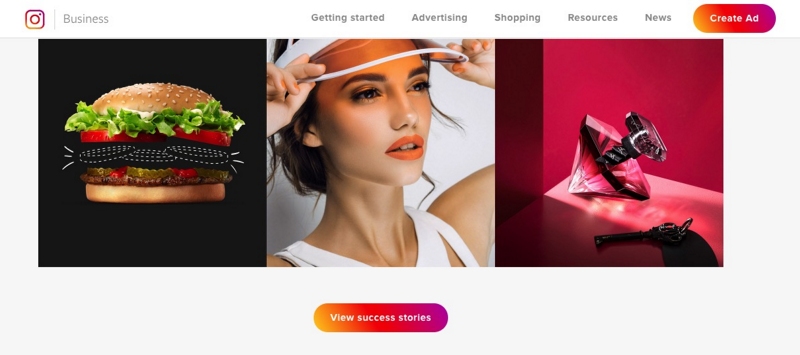
If you need a reminder, consider the first time you interact with your phone each day. Are you more likely to go straight to a blog or start scrolling on Instagram first?
The immersive storytelling app was founded 10 years ago and offers multiple ways of producing permanent and disappearing content.
Instead of swapping business cards with your blog address à la 2012, most people will now ask for your Instagram handle. This is usually the first interaction that potential followers will have with your brand.
Initially only a select group of photographers and tastemakers started using the app, mainly for its distinctive filters. From 2012, brands started to include Instagram coverage in campaigns, alongside a blog post.
Instagram has become one of the most important channels for influencer marketing with 89 percent of marketers preferring its features. It is said to ‘inspire action’ and strengthen the relationship with an audience.
Most brand campaigns will now include a feed and Stories component. You can charge a premium if you’re able to create eye-catching IGTVs and Reels posts.
Trend alert: There’s been an 80 percent increase in time spent watching video on the app, so incorporating videos and Stories brings added value to your business goals.
How to become an influencer on Instagram
If you’ve planned your blog mission statement, then it’s pretty easy to translate this over to Instagram. The most important thing is to know what you stand for, the boundaries you will set, and how you want your followers to feel.
Your profile allows you to share 150 characters in the bio, so use them wisely. You can also link to other accounts or hashtags that you’ve created.
Start off with the basics. Your location, niche, pronouns, and how you can be contacted. You can also use emojis and punctuation creatively, but these will also make up your character limit.
One trick is to add further description to your name, such as ‘London,’ ‘Midsize Style,’ or ‘Fashion.’ This means that your profile will come up when people are searching for those terms.
When adding a bio link, it may be better to create a mobile-friendly page on your blog or Linktree for this purpose. This is particularly useful if you don’t yet have the ‘swipe up’ feature. You could include your ‘About Me’ page or any key posts you’ve recently mentioned in Stories.
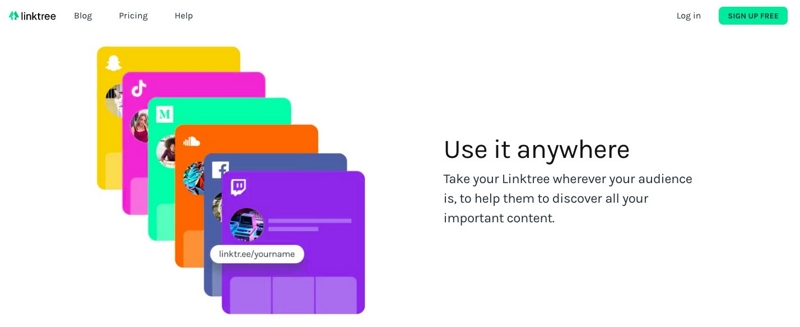
If you want to go into more detail and keep people on the app, then create some Instagram Highlights. Any 24-hour Stories you post are archived and can be saved in specific categories. These live under your bio forever.
Some suggestions are ‘About Me,’ ‘Favourite Posts,’ ‘FAQ,’ and ‘AD Disclosure.’
How to repurpose your fashion blog content for Instagram
Once you’ve shot a series of images for a blog post, there’s no reason why you can’t share them on Instagram as well.
A blog post where you show ‘5 different ways to style leopard print for Autumn’ could be five separate Instagram posts across a couple of weeks. If you’ve written 1000 words, then you could take out key points, and use this for a caption.
You also have the potential to cross-promote via swipe ups if followers want to see more detail. This saves you time and allows you to publish feed content regularly.
Once you have your content idea, make sure you take images that will work for the nuances of the platform.
Start thinking about this at the planning stage. Instagram crops feed images at a 4:5 ratio and Stories at 9:16, so make sure you take a range of shots. Portrait shots are usually preferable as they take up the majority of the screen.
If you compose images solely for blog posts, then you risk losing the main focal points once you post elsewhere.
5 Tips for producing versatile images
- Create a shotlist and include a list of requirements. This could include ‘3 x Full body shots’, ‘3 x Waist Up Shots’, ‘3x Detail shots’ if this is an outfit shoot. It’s always best to have more options to choose from.
- Shoot from further away to allow for flexibility when cropping.
- Imagine how the composition will look on a phone and adjust accordingly. Review images if you can. The more you shoot like this, the more it will become second nature.
- Experiment with multiple angles. Although it’s good to follow the rules of photography, sometimes you may strike gold with a shot that works no matter where you’re posting it.
- Consider adding in a video component at this stage. This could be used for Instagram Stories or a carousel image.
Stuck on how to look confident on camera? Social media influencer Quigley Goode has produced several guides on how to pose solo, in a couple, or with a larger group.

The Do’s and Don’ts Of Instagram
Do:
- Switch to a Creator Account – This 2019 update differentiates fashion influencers from traditional businesses. It allows you to see your analytics, understand demographics, and use the Paid Partnership feature. Instagram also has a dedicated account for Creators to follow, which is regularly updated with tips, interviews, and trends.

- Create a system that works for you – Think about your strengths, whether that’s executing ideas quickly, or needing a couple of hours to brainstorm at the start of the week. Consider shooting content in batches or writing captions ahead of time for efficiency. If you struggle with a particular aspect, then look at accounts or sources that inspire you. Is there something that you could implement and translate into your own style?
- Keep updating your hashtag lists – This is the easiest way to make your content discoverable. Use a mixture that relates to your content niche, and switch things up once there’s over 100k posts. You may want to create your own custom hashtags for your own trends or travel snaps.
- Remember to experiment and analyse – With the introduction of Reels, the app is constantly evolving, and your engagement can vary as people adapt to new features. Try out new formats, posting times and hashtags to keep your approach fresh. You may gain even more audience insight by planning a 1pm Live styling chat every weekday. Get out of your comfort zone! Look at your post insights to see the differences between what makes people share, save, and follow.
Don’t:
- Buy followers and likes – Although it may be tempting to inflate your follower count and bump up your fees, this is actually classed as fraud. Brands will be looking at analytics to measure the success of a campaign. If genuine people aren’t swiping up and purchasing, then you can’t fulfil the objectives of the campaign. This will make brands less likely to trust influencer marketing. For this industry to survive, it’s important to think about the future collectively, rather than quickly getting to the next follower milestone.
- Lose perspective – Of course it can be disheartening if a concept performs badly, after spending hours perfecting the idea. Remember that people engage with the app differently throughout the year and think objectively. You may notice that Reach is down in summer, when people are on holiday and not using their phones as much. Perhaps less people are liking videos because it doesn’t seem like the obvious thing to do. Look at other metrics such as impressions, saves, or shares to work out whether your posts are gaining traction in other ways.
- Forget about your audience – Although there are some accounts that can post a single emoji and gain thousands of likes, it’s a better long term strategy to offer value to your audience. Can you inspire through your images, inform based on expertise, or entertain with witty captions? If you’re stuck, then use the Instagram Story question box to learn what your followers like the most and what to avoid.
Sponsored content
The main source of income for influencers is creating sponsored content on your blog, Instagram, YouTube, or TikTok account. There have always been marketing campaigns and content publishers such as magazines, but now influencers have been added into the mix.
Since many of us are consuming content via these platforms, marketing has had to adapt. Brands can work with creators from specific demographics and products can be incorporated in a more natural, relevant way.
Usually a brand will get in touch with a brief, deadline, and deliverables and you have to decide whether it’s the right fit before sending over your fees.
You can also pitch to brands if you’ve built a relationship with your contact and it fits into their marketing strategy.
All commercial content has to be marked clearly across platforms, usually with ‘AD’ at the start.
Affiliates
Affiliate links are a way for a publisher to earn a commission when a purchase is made through a certain trackable link. A ‘cookie’ is embedded in your computer once you click. If it’s active (usually for 24 hours), anything purchased from that site will result in a commission for the blogger.
Purchasing through affiliate links is a great way for your audience to support you, as it doesn’t cost them any more (the commission is a percentage of the total transaction).
More income streams for fashion bloggers
- Digital products – Are you a pro at shooting self-portraits, negotiating with brands, or goal setting? Consider offering your skills via a course, e-book, or webinar. These are more of an investment in terms of time but can reap rewards after the initial outlay. You can offer more insight than a blog post and streamline your topic of expertise.
- Podcasts – This is more of a long term strategy that helps you build your perception. Podcasts are great for covering topics in a conversational way, and advertisers like them as listeners are more likely to stay engaged. Some platforms pay their podcasters, or they can be monetised with affiliate codes and brand sponsorships
- Consulting – You can utilise your transferable skills by consulting for brands or agencies. They may need advice on a range, content creation, or influencer strategy.
- Subscriptions – Substack and Patreon allow you to charge your followers monthly subscriptions for newsletters, long form posts, and podcasts.
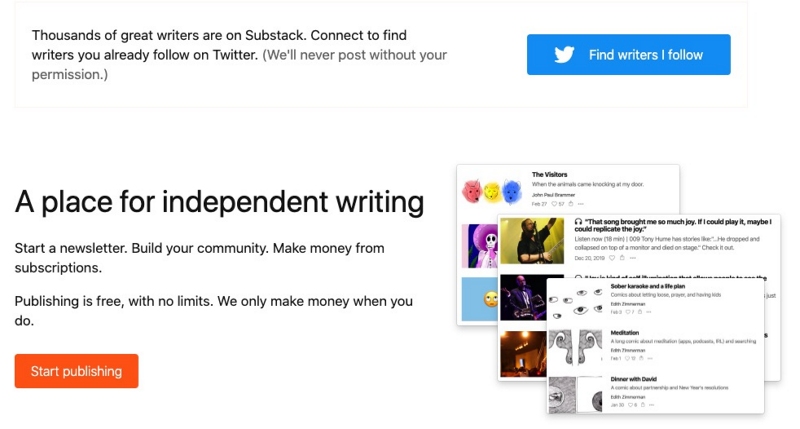
You can have more control over the relationship with your audience, as there’s no algorithm to worry about, plus it allows you to stay impartial.
- Product lines – This is probably the dream for many influencers. Established brands may invite you to design a range, paying a one-off fee, or using a commission model. Examples include the Zoella x Etsy collaboration or Lorna Luxe for In The Style.
Like starting any business, things can be uncertain for the first few years. It’s important to have savings and build your blogging business alongside other freelance work.
Fashion blogs are the evolution of ‘weblogs’ dating back to the 1990s. Back then there wasn’t much posing, but multiple pages filled with text and links.
With the arrival of platforms such as Blogger (1999), WordPress (1993), and Typepad (2003), content creation became far more straightforward, and you didn’t need any coding skills.
Many of the original style bloggers started off in forums such as The Fashion Spot (founded in 2001), sharing mirror outfit photos and runway commentary.
Other members would be supportive and celebrate the personal style of ‘ordinary’ people.
By 2006, there were around two million fashion blogs. This was at a time where many traditional fashion publications didn’t have an online presence.

Visuals weren’t the main focus with the camera technology that was around at the time. Blogs usually had long form posts and lively discussions in comment threads.
By 2009, the standards were starting to climb even higher. Fashion bloggers were now appearing on the front row at New York Fashion Week.
What made fashion blogging such a unique phenomenon?
Previously, if you wanted to become a fashion journalist or model, you needed to circumvent a complex series of internships or be genetically blessed. Not to mention, gatekeepers like editors or model scouts would carry their own biases and judgements.
Fashion bloggers created a new role within the ecosystem. These were individuals who didn’t always have a traditional industry background, but a keen interest and willingness to get in front of the camera.
The secretive and exclusive world of fashion was starting to open up.
Personal opinions reigned supreme rather than objective commentary. Bloggers would recreate runway looks with their own wardrobes, rather than waiting months for luxury items to land in stores.
Blogs also allowed underrepresented groups to participate and transform visual culture for the better. ‘Fatshion’ blogs were a response to the exclusion of curvy and plus-size bloggers from the pages of magazines.
Instead of sticking to items that were seen as ‘flattering,’ these bloggers challenged the shaming narratives that were seen in mainstream media.
Sites proudly displayed names such as ‘Young, Fat & Fabulous’ and ‘Fat Girls Like Nice Clothes Too,’ empowering their audiences and reframing the idea of what a desirable body looks like.
One pivotal moment was when Bryan Boy and Tommy Tom were given front row seats at Milan fashion week, next to Anna Wintour and Suzy Menkes. The New York Times responded with an article titled ‘Bloggers Crash Fashion’s Front Row.
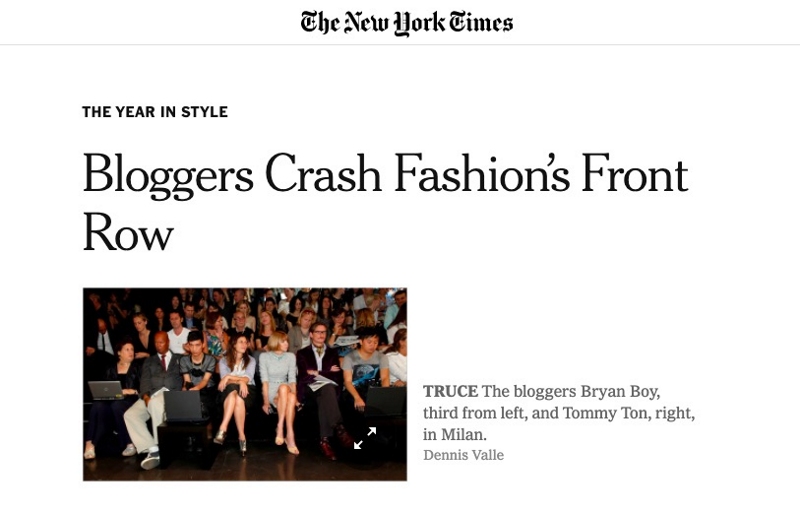
Despite the snarky headline, the paper realised that these first wave influencers were onto something.
As a result of the recession, magazines such as Vogue, W, and Glamour had undergone deep cuts after losing advertising revenue.
Fashion blogs were starting to gain readership and had an advantage by covering new collections instantly. They could also build a trustworthy relationship with their readers, through comments and responding to feedback.
Opportunities were starting to increase. Jane Aldridge, the then 17-year-old founder of ‘Sea Of Shoes,’ brought out a collaboration with Urban Outfitters in 2009.
Press events started to include digital creators and they gradually became recognised as tastemakers. A new kind of marketing was starting to emerge.
Rather than trying to work against them, Cosmopolitan magazine saw the potential of featuring and link-building with fashion bloggers. They launched their inaugural blog awards in 2010, resulting in thousands of eyes on their voting pages.

Fashion blogging wasn’t just a hobby, but a way to build a personal brand, create an online portfolio, and earn money through commercial opportunities.
How has fashion blogging evolved over the last 10 years?
In 2020, a fashion blog is just one part of your offering. The rise of other platforms such as Instagram, YouTube, and TikTok has changed the game and led to the rise of the ‘influencer.’
This new term means that an individual has built a profile on a digital platform and can sway an audience to purchase or take a specific action.
Many ‘influencers’ started off as fashion bloggers, but there’s a huge proportion who were ‘Instagram-first’ as it required less of a time investment. Some also had different motives compared with the original pioneers.
Unfortunately, a lot of confusion comes from the fact that influencers can be conflated with reality TV stars or celebrities, who sometimes promote harmful products.
Influencers can also be known as:
- Bloggers
- YouTubers
- TikTok stars
- Content Creators
- Digital Creators
- Digital First Talent
- Entrepreneurs
We’d recommend not getting caught up on labels due to how they are perceived, as terms can be fluid and ever-evolving.
Imagine a scandal involving a journalist at a tabloid newspaper. Does this mean that the entire industry is doomed?
Is fashion blogging still relevant?
It may make more sense to post a series of Instagram Stories or a fast-paced TikTok video to showcase your latest purchases, rather than a blog post.
However this doesn’t mean that a fashion blog is now redundant. If you have a niche and archive of content, then a blog can serve as a useful portfolio.
Compared with most social platforms, blogs are easily searchable and posts can be discovered years after the initial publish date. A post that has been optimised well for SEO can continue to be found, pinned to Pinterest, and reap the traffic benefits.
On the flipside, Instagram posts can be removed, flagged, or shadowbanned. You could risk losing your entire livelihood because of how images are perceived by moderators.
A blog is also the only platform that you own entirely. See it as a strong foundation that allows you host evergreen content.
Instead of posting every day in the same place, it makes more sense to post smartly and remember how audiences are consuming content. Create a relevant idea first, then choose the appropriate platform.
Karen Blanchard was one of the early adopters with her street-style focused blog ‘Where Did U Get That.’ She still runs her site, alongside popular, snappy interview-based videos documenting the street style of real people in New York.

This format allows her audience to get a sense of the people behind the outfits, which would be harder to replicate in a blog post.
How have fashion bloggers diversified?
It’s quite common to see books, fashion lines, and even television segments fronted by fashion bloggers.
Examples are Victoria Magrath of ‘In The Frow,’ who released ‘The New Fashion Rules’ in 2018 and Candice Brathwaite, who regularly appears on breakfast television.
Fashion bloggers now have multiple different income streams that could include photography, consulting, presenting, filmmaking, styling, public speaking, and curating events.
They also cover a wide range of topics on social media, such as beauty, homeware, travel, culture, activism, parenting, and personal development.
Although it may seem that these creators have abandoned their original websites, starting a blog can give you the training and transferable skills for a multi-faceted career.
In 2020, you need a willingness to pivot, experiment with new forms of media, and know what makes you unique.
What’s next for fashion influencers?
Although 2020 has been a challenging year for many industries, digital creators have an exciting opportunity. Brands are due to spend up to $15 billion on influencer marketing by 2022.
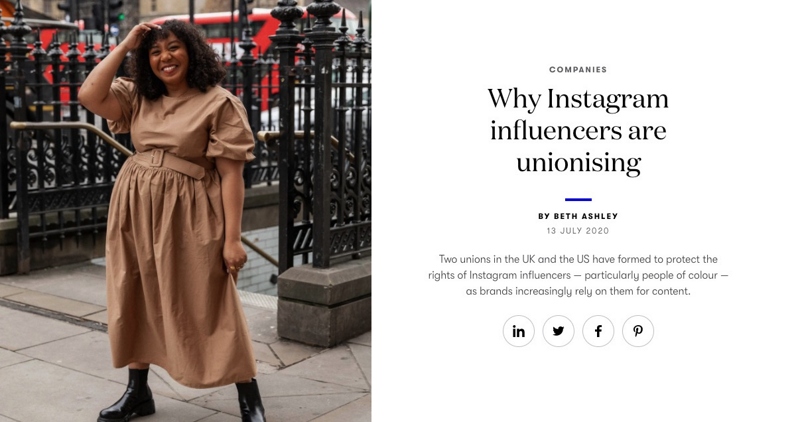
Since social media has become such a fixture in our lives, influencers can prove to be versatile intermediaries between brands and consumers. During lockdown, they were able to shoot products in at-home studios whilst traditional brands had to halt production.
‘Brands have been aware for a while now that diversified marketing is good business. Consumers have made their desire for more inclusive marketing clear for years, with 69 percent of Gen Z and millennials saying they think it’s positive for brands to feature diverse models in an ad, according to research from Ypulse.’
YouTuber Jackie Aina is also set to produce a documentary focusing on how Black beauty influencers are becoming a force for social change. The rise of content creation has allowed underrepresented groups to have a voice and empower their followers, who may not have been catered to elsewhere.

However with increasing backlash, a recession and world events, it’s important for influencers to be mindful of how their content can be perceived.
Stay aware – Being your own boss is a challenge. It’s up to you to keep informed of any industry developments and trends. Create a separate email address for newsletters and subscribe to podcasts by key thought leaders. Suggested sources are Business Insider, The Business Of Fashion, The Drum, Vox, PR Week, and Digiday. Look out for courses to build your skillset, or consider expanding your team.

Build a network – If you worry about what to charge or struggle with motivation, then it may be useful to join forces with other like-minded creators to share advice. Start a Facebook Group, Slack channel, or join a larger scale organisation such as The Creator Union. This was founded by 12 British influencers and wants to ensure that individuals have proper protection when it comes to payment, contracts, and disputes.
Look after your mental health – With all the screen time, dealing with criticism, and constantly being aware of what peers are doing, it’s important to recognise when things might be taking a toll on your mental health. Schedule in social media breaks, and consider seeing a therapist or coach to deal with any issues that may come up. Once you have coping mechanisms and an appropriate space for discussion, it can help you see situations differently.
Fashion blogging may look very different in 2020, but there’s still exciting opportunities and the potential to shape culture for the better by adding your voice into the mix.
With our ultimate guide, you have everything you need to make an impact.
